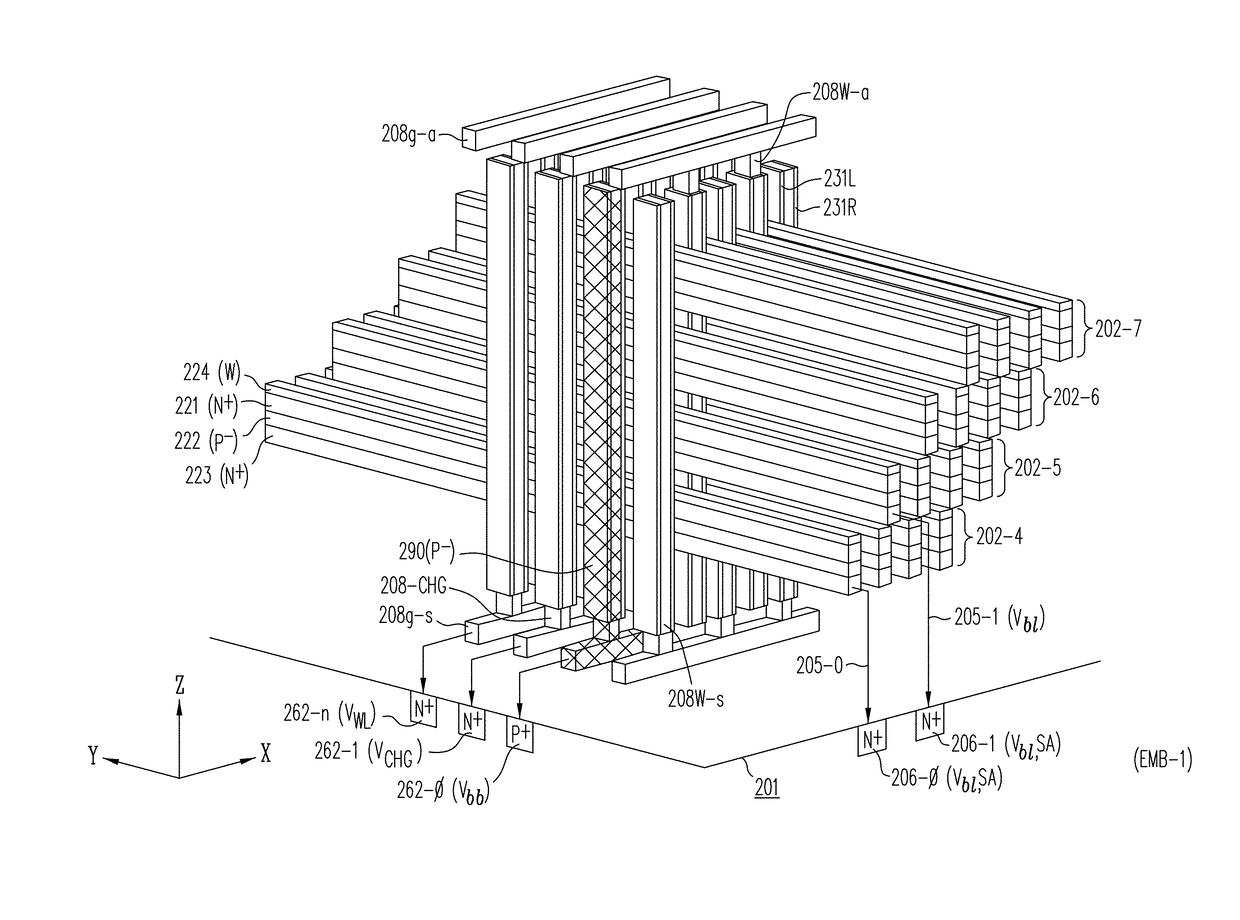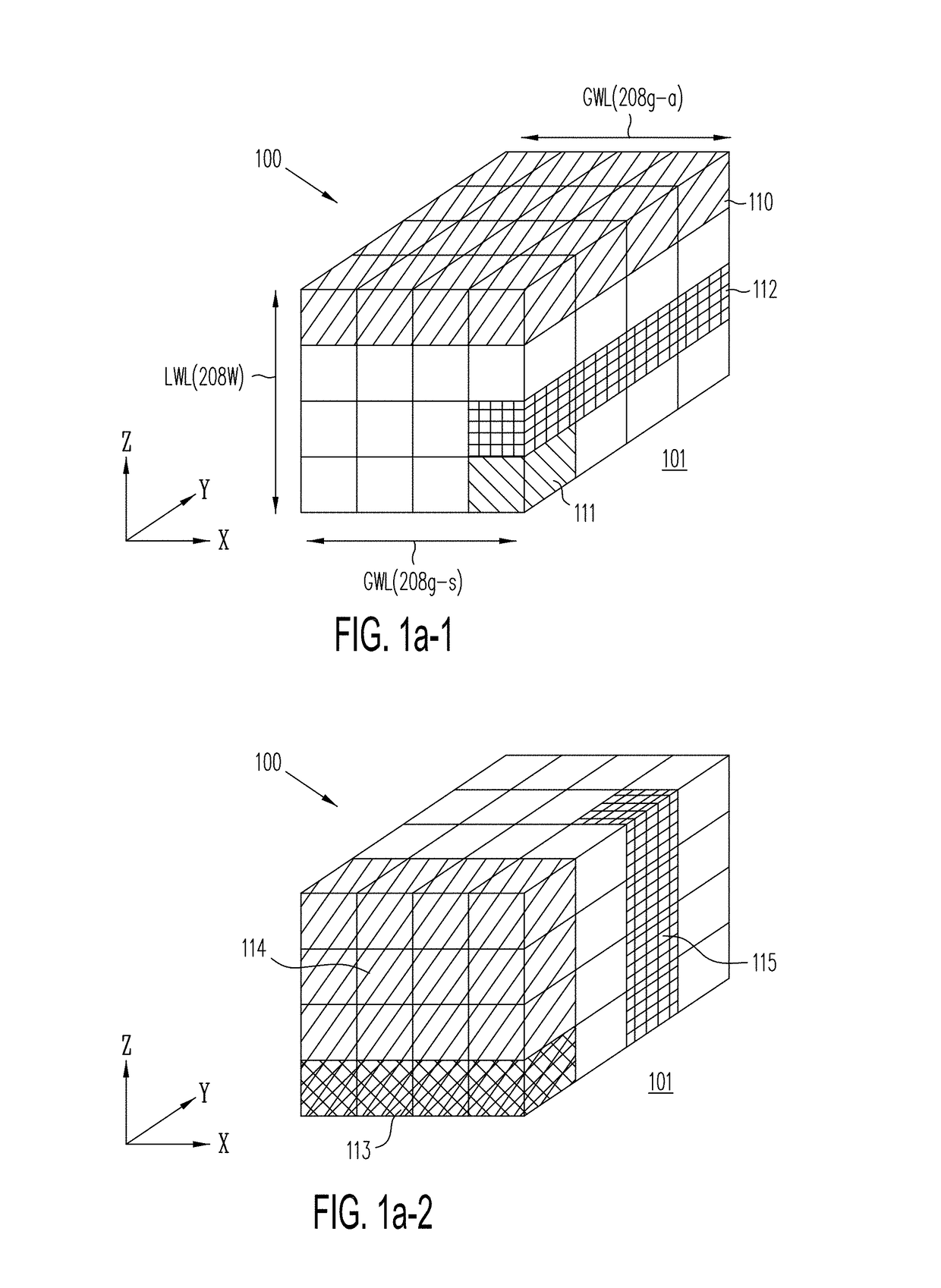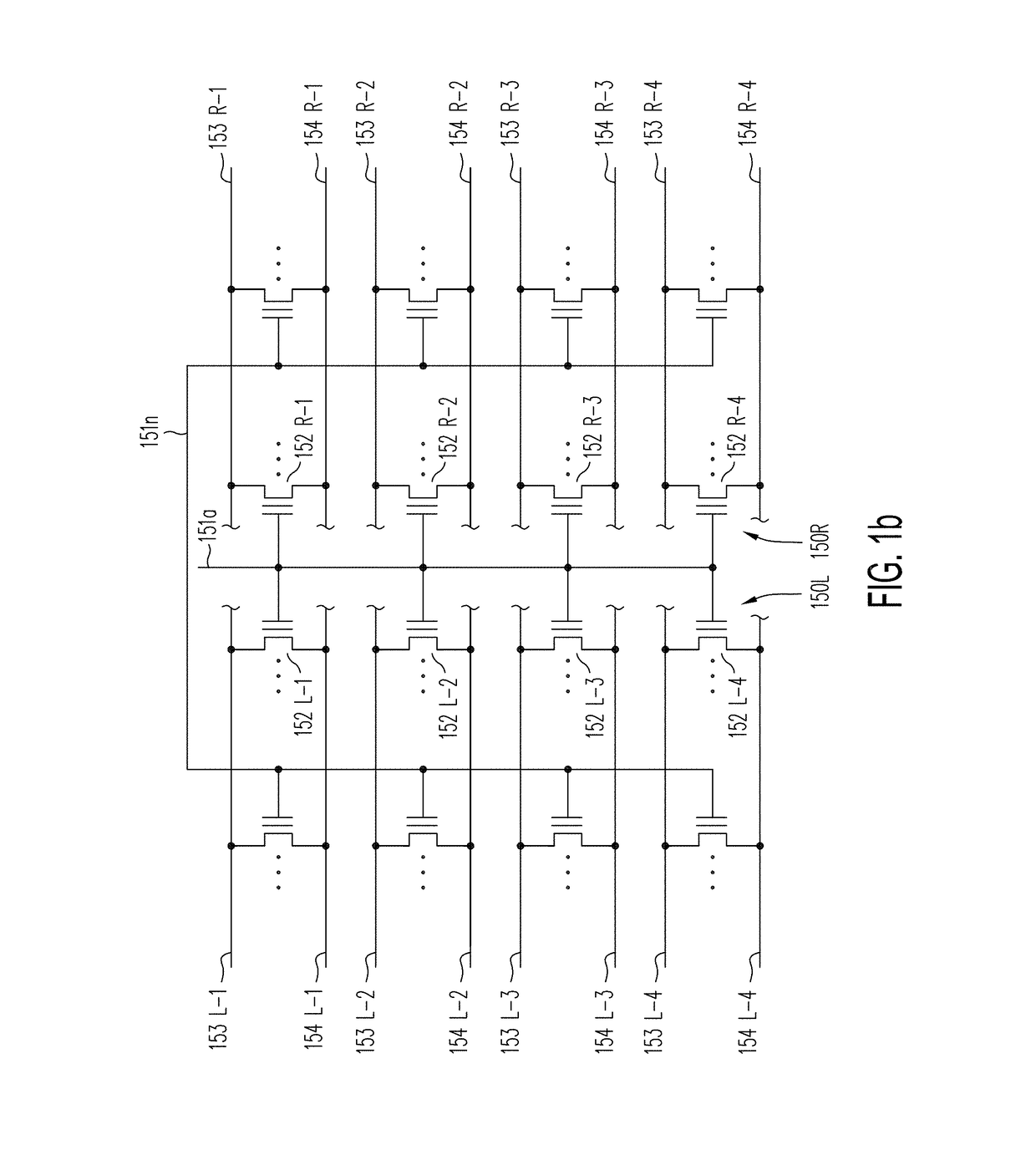Capacitive-coupled non-volatile thin-film transistor NOR strings in three-dimensional arrays
a capacitor-coupled, non-volatile technology, applied in transistors, digital storage, instruments, etc., can solve the problems of long latency, limiting the number of transistors that can be programmed in parallel, and unread active tfts that are not read or programmed, so as to reduce read-latency, reduce sensitivities, and increase storage density
- Summary
- Abstract
- Description
- Claims
- Application Information
AI Technical Summary
Benefits of technology
Problems solved by technology
Method used
Image
Examples
Embodiment Construction
[0067]FIGS. 1a-1 and 1a-2 show conceptualized memory structure 100, illustrating in this detailed description an organization of memory cells according to embodiments of the present invention. As shown in FIG. 1a-1, memory structure 100 represents a 3-dimensional memory array or block of memory cells formed in deposited thin-films fabricated over a surface of substrate layer 101. Substrate layer 101 may be, for example, a conventional silicon wafer used for fabricating integrated circuits, familiar to those of ordinary skill in the art. In this detailed description, a Cartesian coordinate system (such as indicated in FIG. 1a-1) is adopted solely for the purpose of facilitating description. Under this coordinate system, the surface of substrate layer 101 is considered a plane which is parallel to the X-Y plane. Thus, as used in this description, the term “horizontal” refers to any direction parallel to the X-Y plane, while the term “vertical” refers to the Z-direction. As shown, bloc...
PUM
 Login to View More
Login to View More Abstract
Description
Claims
Application Information
 Login to View More
Login to View More - R&D
- Intellectual Property
- Life Sciences
- Materials
- Tech Scout
- Unparalleled Data Quality
- Higher Quality Content
- 60% Fewer Hallucinations
Browse by: Latest US Patents, China's latest patents, Technical Efficacy Thesaurus, Application Domain, Technology Topic, Popular Technical Reports.
© 2025 PatSnap. All rights reserved.Legal|Privacy policy|Modern Slavery Act Transparency Statement|Sitemap|About US| Contact US: help@patsnap.com



